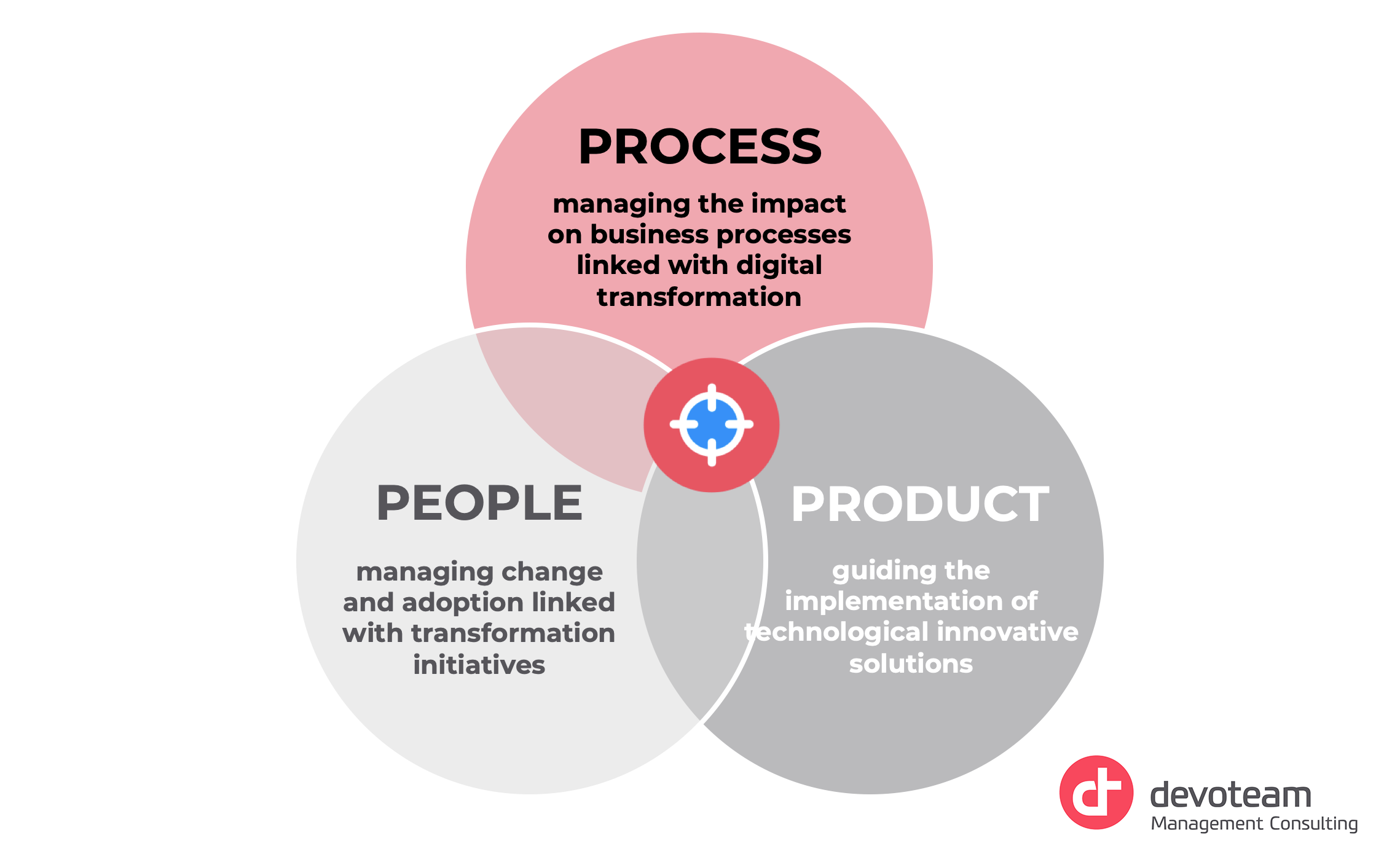When it comes to digital transformation, there’s nothing wrong with a bit of procrastination. Because sometimes it’s good to wait and see which way the wind blows. If you move too soon, the market may not yet be interested in what you have to offer, which means your investment was for nothing (or even worse, a competitor may steal your basic idea and come up with a modified version that actually catches on). On the other hand, if you move too late your business may never recover.
So how do you know in advance when it’s the right time to move? Actually, you can’t know. That’s why you have to be ready to act immediately when the time comes. And why every company should have a Digital Transformation Launch Team that is capable of running a full-blown project within weeks. It acts as your fast response rescue team, deserves your active support and constant top management attention.
In a nutshell, digital transformation is about two things. For some companies, it’s about retaining a lead over others at all costs and continuously increasing their lead over what’s left of the competition. Those companies don’t need launch teams. They’re in a permanent transformation process anyway and the outcome is either a major success or a major failure. For most other companies, the goal is more about maintaining a competitive edge and not being disrupted by a new type of competition that they didn’t see coming.
So suppose you’re in a company where digital transformation is an aspiration. Even then, you should certainly have assessed your transformation readiness. Because first came the computer, then the Internet, then the smartphone, now it’s machine learning and the next game-changing innovation is certainly coming. Everything that can be digitised and automated will be digitised and automated. Sooner or later, something will disrupt your core activity. Are you prepared for that day?

Devoteam’s successful value transformation approach: 3P impact coverage
Despite all the fanfare around digital transformation, most companies still have to adopt a real transformation strategy. That’s procrastination, pure and simple. Will this cause problems? Maybe not, but at the very least you should be ready to activate your Digital Transformation Launch Team at the snap of your fingers. Here is a list of the things you need, to make it happen:
- If you’re not already doing this, start automating your internal processes and don’t stop until you get beyond the 90% mark. When you need to move fast, the last thing that should be holding you back is internal paperwork. While you’re at it, simplify these processes too.
- The same goes for the modernisation of your software on which your internal processes run. Get rid of everything that is not service-oriented and open up your software infrastructure design so that it’s ready to interact with the outside world.
- Understand in detail where your current profits come from and how they are evolving, or alternatively, how your costs are distributed over your different activities. You may need to cut activities when you’re transforming, so you need a thorough knowledge of how the money flows.
- Regularly inform top management about the latest trends in digitalisation. Show them what your target audiences are doing with technology and let your directors experience those features and tools themselves. Don’t be shy about talking about hypes, but try to make a distinction between established trends and fads.
- Create an information cell to regularly update everyone involved about changes in the market. Knowing what’s going on is essential for your timing. Look a bit beyond your current market and maybe include other markets with similar business processes.
- Run some form of innovation lab, participate in start-ups or do both.
- If you already have a transformation office in place, that’s great. Does it take care of products, processes and people? The people part is often forgotten, although change management is a vital part of transformation. In fact, the biggest cultural shift will need to happen internally.
- Gather as much information as you can about your current customers’ behaviour. Knowing your customers is the best insurance against being disrupted by a newcomer. Newcomers don’t have customers when they start – never forget that.
- We’ve saved a hard challenge for last. If you want to deal with the internal battles between your departments and break up concentrations of power, now is the time to do it. This is probably a taboo subject in many large organisations, so let’s hope your transformation office can handle it.
